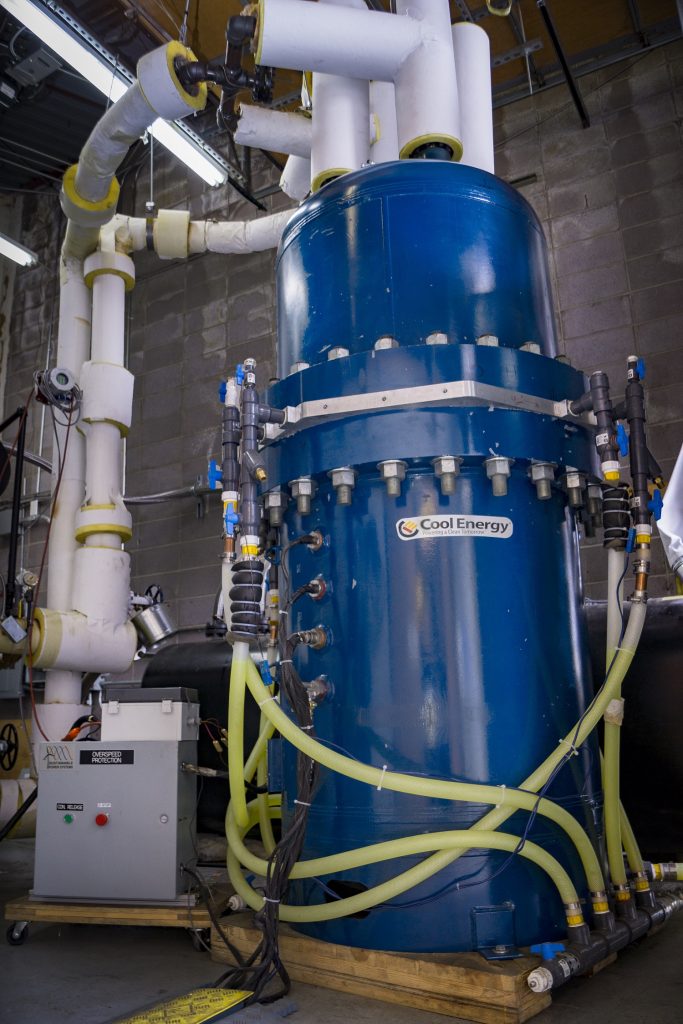Cool Energy’s novel low-temperature ThermoHeart® Stirling Engines were designed for distributed, onsite heat-to-electricity applications. We tap into a liquid or gas heat stream and convert it into mechanical energy to produce electricity. The ThermoHeart® Engine differs from other Stirling engines because it is optimized to run at lower input heat temperatures than previous engines (150°C to 400°C fluids or gas up to 700° C). These engines are a new approach to the well-known Stirling cycle, employing a breakthrough engine configuration, low-cost materials, non-combustion, self-lubricating components, a nitrogen working gas, and very long service intervals. A Stirling cycle engine is a heat engine that operates by expansion and compression of air or other gas (called the working fluid), harnessing a temperature differential to yield a net conversion of heat energy to mechanical work. The resulting mechanical work drives a generator built inside the ThermoHeart engine that creates electrical power (currently 3kW and 25kW output models).

